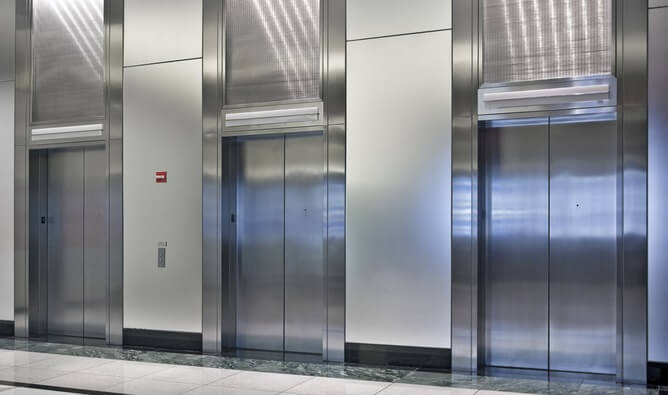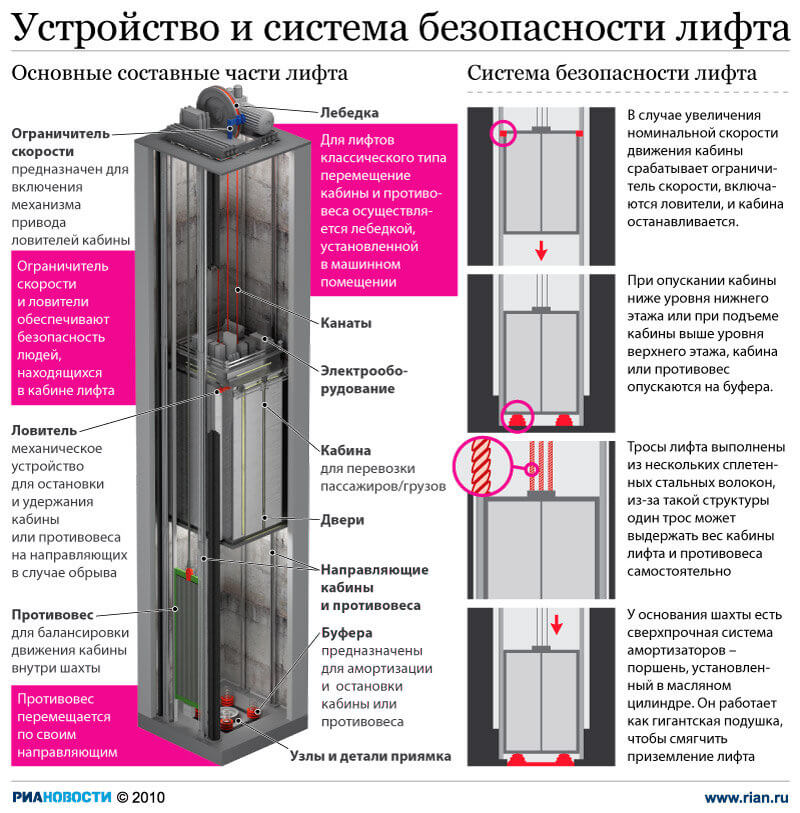
The first mention of the elevators were written by the Roman architect Vitruvius, who refers to Archimedes, who built a lifting device in the year 236 BC. Then the elevators are built the 6th century in Egypt, 18th century France and the Russian Empire. In 1854 American inventor, Elisha Otis made a breakthrough in the design of elevators and demonstrated the safety catcher. This gave the opportunity to build skyscrapers. The first passenger Elevator-lift was installed in new York three years later. And the first electric Elevator was patented by Otis in 1861. How does the modern Elevator electric drive — this is in the news today!

A cabin is suspended by several steel wire ropes or cables. They are usually from 3 to 8 pieces. To the ropes creaked and not rusted, they are impregnated with oil. The movement of the Elevator causes the power plant winch, located in most cases in the upper part of the shaft. It is driven by an electric motor and represents the traction sheave, or, in other words, the wheel with a broad rim, which is encircled by steel cables. They descend on the counterweight is a weight which balances the lift and reduces the load on the engine. Optimal weight of the counterweight equal to the total empty weight of the cab and half the payload.

Upon rotation of the pulley due to friction rewinding the ropes on the side of the cab or counterweight, which thus always move in opposite directions. The main load is performed by the counterweight, which ropes are attached with the aid of powerful springs. It is necessary for the smoothness of the cabin when you stop or start of movement of the Elevator. Speed of a cabin movement is controlled by a special controller. Outside the cabin are guide shoes which slide on the guide shafts and support the cab in a vertical position.
The safety of passengers the Elevator for about 30 electronic and 5 mechanical devices. The most important of them are automatic catches. These mechanical devices are controlled by a separate belt and pulley of the speed limiter. In the fall or overload of the cabin cable of the speed limiter stops moving and due to this strong jerk “pulls” wedge shoes hold, that stop the lift.

Another safety device is the buffer. These devices smooth the deceleration of the cabin are located at the bottom of mine. They may be polyurethane, spring or oil type depending on the rated speed. The buffer is designed to convert the kinetic energy of the cab and counterweight are in heat and are designed to soften the blow in case of postanovki cabin on the first floor level.
As for opening doors, this process is controlled by special controller. It defines a called floor and when the automatic actuator opens the door, to admit and to release the passengers. The outer doors of the Elevator do not have their own drives and do not open can they reliably hold a special lock. Open them can only lift cabin: it is a drive of doors — both internal and external. For precise stopping at the desired floor on the Elevator installed induction or magnetic reed sensor which interacts with the magnetic shunt on each floor, and thereby determines the accurate position.
Currently, engineers and designers continue to improve the lifting equipment. Thus, thyssenkrupp Elevator is working on the world’s first MULTI beskonechnym a lift that will allow you to navigate multiple cabins in a single shaft in vertical and horizontal direction.
How does it work? | Lift electric
Hi-News.ru